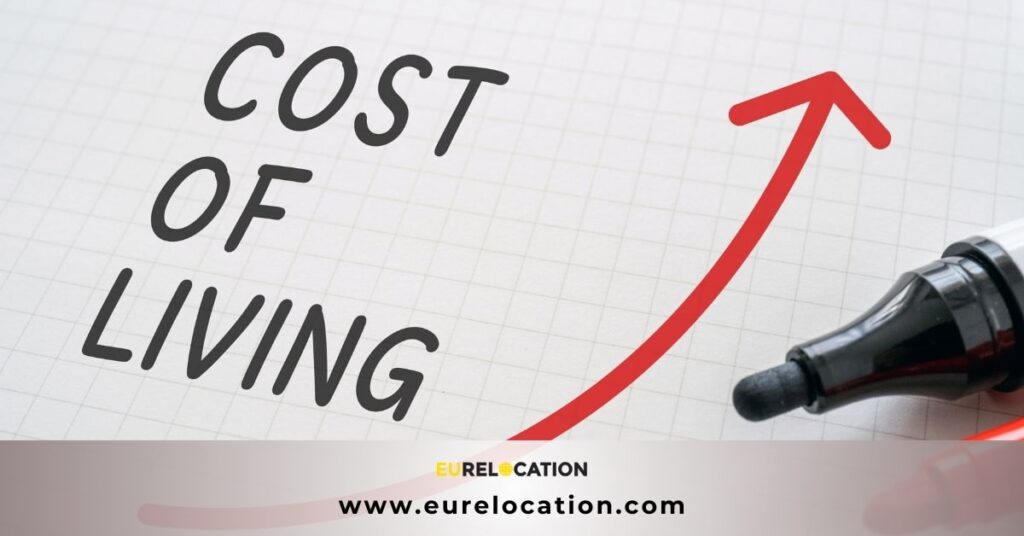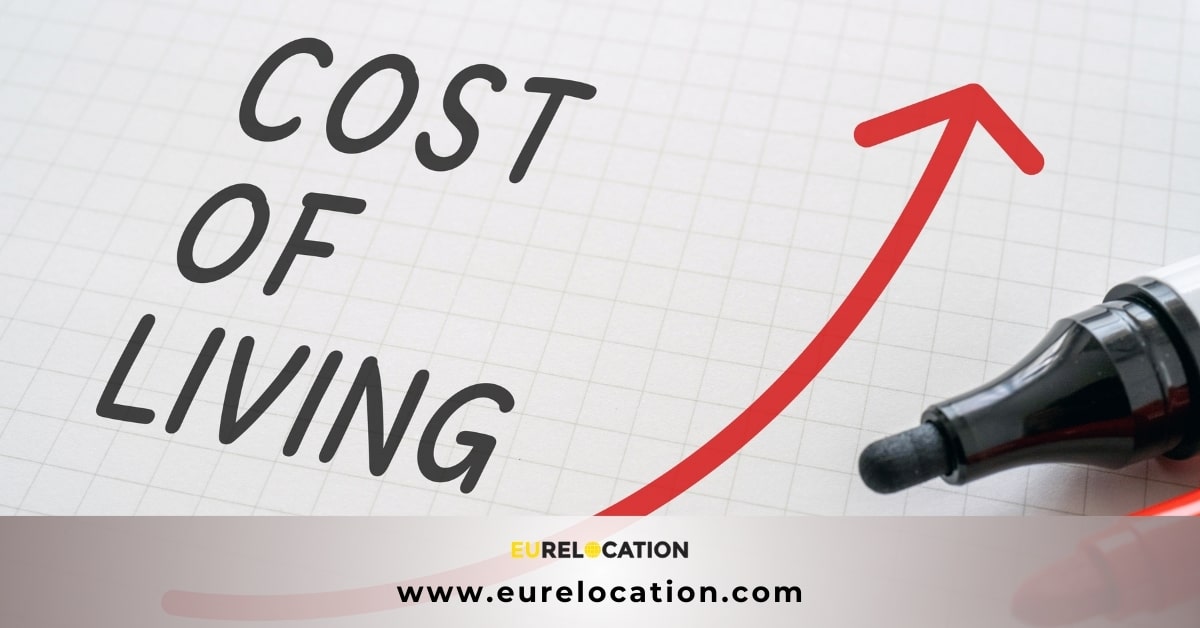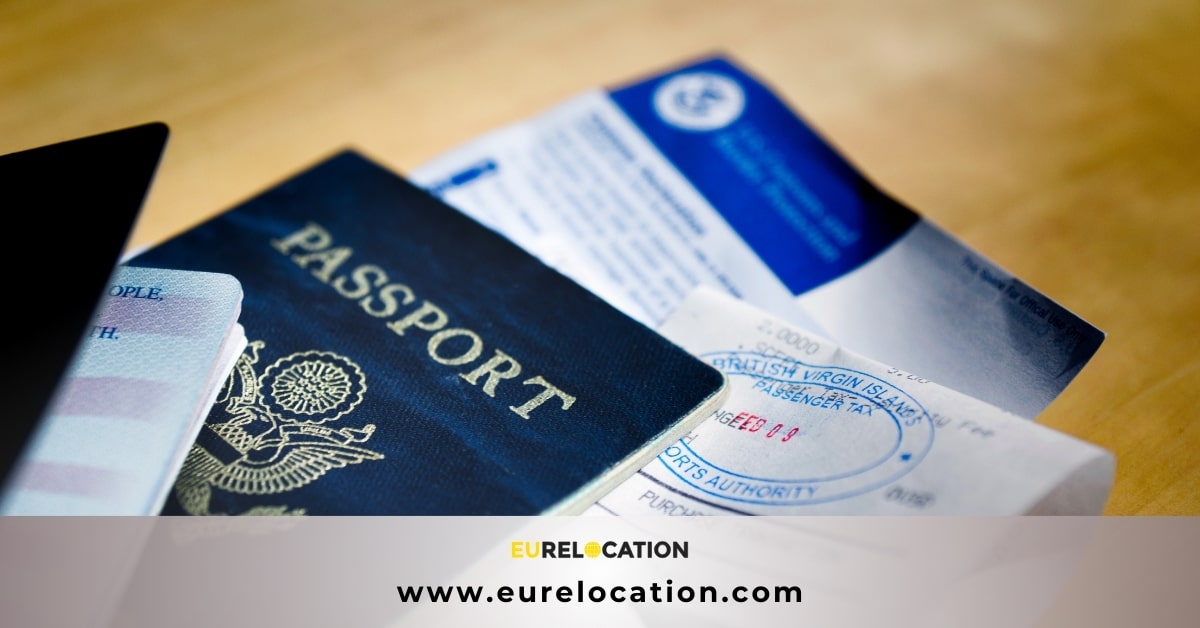When moving to a new city, one of the most important things to consider is the cost of living. Europe is full of diverse cities, and while each one offers something unique, the cost of living in Europe can be very different from place to place. Whether you are moving for work, study, or just a new adventure, knowing what to expect in terms of living costs can help you make smart choices for your budget and lifestyle.
This article will break down the cost of living in some of the most popular cities in Europe, covering housing, food, transportation, and more. Let’s look at what you can expect when it comes to the cost of living in major European cities.
1. Cost of Living in Europe: London
London is one of the most well-known cities in Europe. It’s a hub for business, culture, and entertainment, but it’s also known for being expensive.
a. Housing
Rent in London is very high, especially in the city center. A one-bedroom apartment in the heart of London can cost between £1,500 and £2,500 a month. If you live further from the center, you might find rents starting at £1,000 to £1,500.
b. Utilities and Internet
Utilities like electricity, heating, water, and garbage collection usually cost between £150 and £200 per month. Internet typically costs around £30 to £40 a month.
c. Food and Groceries (Cost of Living in Europe: London)
The cost of groceries in London can add up quickly. A single person can expect to spend £200 to £300 a month on food. Eating out is also expensive, with a meal at a cheap restaurant costing around £15 to £25.
d. Transportation
London has a vast public transport network, but it’s also pricey. A monthly travel card for public transport in central London costs about £150. Many people use the Tube or buses to get around.
e. Overall
London is expensive, especially when it comes to rent and daily expenses. However, the city offers lots of job opportunities, entertainment, and a dynamic lifestyle, making it a popular choice for many.
2. Cost of Living in Europe: Paris
Paris is known for its beauty, history, and culture. While it’s one of the most popular cities in Europe, it’s also on the expensive side.
a. Housing
Renting in Paris is costly, especially in the central areas. A one-bedroom apartment can cost between €1,200 and €1,800 a month. If you live on the outskirts or in the suburbs, prices drop to around €900 to €1,400.
b. Utilities and Internet (Cost of Living in Europe: Paris)
Utilities can cost around €100 to €150 per month for a small apartment. The internet will cost you around €30 to €40 each month.
c. Food and Groceries
Groceries in Paris are somewhat affordable, with monthly grocery bills for one person ranging from €200 to €300. Eating out is also expensive, with a meal at an inexpensive restaurant costing between €15 and €25.
d. Transportation (Cost of Living in Europe: Paris)
Public transportation in Paris is great and easy to use. A metro pass for a month costs around €75. Many people rely on the metro or buses to get around.
e. Overall
Paris can be expensive, but it offers a rich lifestyle, cultural experiences, and fantastic food. If you’re willing to live outside the central areas, you can find more affordable housing options.
3. Cost of Living in Europe: Berlin
Berlin, the capital of Germany, is well-known for being affordable compared to other major European cities like London or Paris. It’s a vibrant city with a rich history and a strong creative culture.
a. Housing
Renting in Berlin is relatively cheap. A one-bedroom apartment in the city center costs between €800 and €1,200 per month, while in the suburbs, it can be as low as €500 to €800 per month.
b. Utilities and Internet (Cost of Living in Europe: Berlin)
Utility bills for a small apartment are around €150 to €200 per month. Internet costs around €30 to €40 per month.
c. Food and Groceries
Berlin is affordable when it comes to food. Monthly grocery bills for one person typically range from €150 to €250. A meal at a cheap restaurant can cost around €10 to €20.
d. Transportation
Berlin has a great public transportation system, including buses, trams, and the U-Bahn. A monthly public transport pass costs between €80 and €100. Many people also use bicycles, as Berlin is very bike-friendly.
e. Overall
Berlin offers a good balance of affordable living and a rich cultural scene. It’s perfect for students, young professionals, and creatives looking for a lower cost of living while still enjoying a big city experience.
4. Cost of Living in Europe: Amsterdam
Amsterdam is the capital of the Netherlands and is known for its canals, biking culture, and progressive lifestyle. It’s an expensive city, but not as costly as London or Paris.
a. Housing
Renting in Amsterdam can be expensive, especially in the city center. A one-bedroom apartment in the heart of the city can cost between €1,200 and €1,800 per month. If you choose to live outside the center, rent drops to around €1,000 per month.
b. Utilities and Internet
Utilities typically cost between €150 and €200 per month. Internet is around €30 to €40 per month.
c. Food and Groceries
Grocery prices in Amsterdam range from €200 to €300 per month for one person. Dining out at an inexpensive restaurant will cost between €15 and €25 per person.
d. Transportation
Amsterdam has a great public transportation network, with a monthly pass costing around €90. Many people in Amsterdam cycle everywhere, which is an affordable and healthy option.
e. Overall
Amsterdam is a beautiful city to live in, but it can be costly. The high quality of life, excellent transportation, and cultural experiences make it a popular place to live despite the higher expenses.
5. Cost of Living in Europe: Lisbon
Lisbon, the capital of Portugal, is growing in popularity for expats and digital nomads because it offers a great quality of life at a much lower cost than many other European capitals.
a. Housing
Renting in Lisbon is much more affordable than in cities like Paris or London. A one-bedroom apartment in the city center costs between €800 and €1,200 per month, while outside the city center, you can find places for €600 to €800.
b. Utilities and Internet
Utility bills range from €100 to €150 per month. Internet costs about €30 per month.
c. Food and Groceries
Lisbon is affordable when it comes to groceries, with monthly grocery costs around €150 to €250. Eating out is also inexpensive, with meals at casual restaurants starting around €10 to €15.
d. Transportation
Public transportation is cheap in Lisbon. A monthly metro pass costs around €40, and the city is very walkable, so many people also enjoy walking or cycling.
e. Overall
Lisbon is one of the most affordable major cities in Europe. With its mild weather, beautiful scenery, and lower cost of living, it’s a great choice for people looking to live in Europe without breaking the bank.
6. Cost of Living in Europe: Valletta, Malta
Valletta is the capital city of Malta, a beautiful island in the Mediterranean. While smaller than many other European capitals, Valletta offers a unique lifestyle, rich history, and stunning views. The cost of living here is lower than other major European cities.
a. Housing
Renting in Valletta is more affordable compared to cities like London or Paris. A one-bedroom apartment in the city center can cost between €700 and €1,200 per month. In the surrounding areas, you can find more budget-friendly options starting at €500.
b. Utilities and Internet
Utilities typically cost between €100 and €150 per month for a small apartment. Internet services cost around €30 to €40 per month.
c. Food and Groceries (Cost of Living in Europe: Berlin)
Groceries in Valletta are affordable. Monthly grocery bills for one person range from €150 to €250. Dining out is also reasonably priced, with meals at inexpensive restaurants starting around €10 to €15.
d. Transportation
Public transportation in Valletta is not as extensive as in larger cities, but it’s still affordable. A bus pass costs around €30 per month. Valletta is a small city, and many people walk to get around.
e. Overall
Valletta offers a lower cost of living compared to other European capitals while still providing a beautiful and historic setting. It’s ideal for those looking for a slower pace of life with Mediterranean charm at an affordable price.
Cost of living in Europe Varies Widely
The cost of living in Europe varies widely from city to city. Cities like London and Paris are known for their high rent and daily costs, while cities like Berlin, Lisbon, Valletta and even Amsterdam are more affordable. However, the cost of living is not just about rent—it’s about what you can expect for transportation, food, and other everyday expenses.
Whether you’re moving for work, school, or just to experience a new culture, it’s important to choose a city that fits your budget and lifestyle. Thankfully, Europe has a variety of cities that cater to different preferences, with a range of options for every budget.









